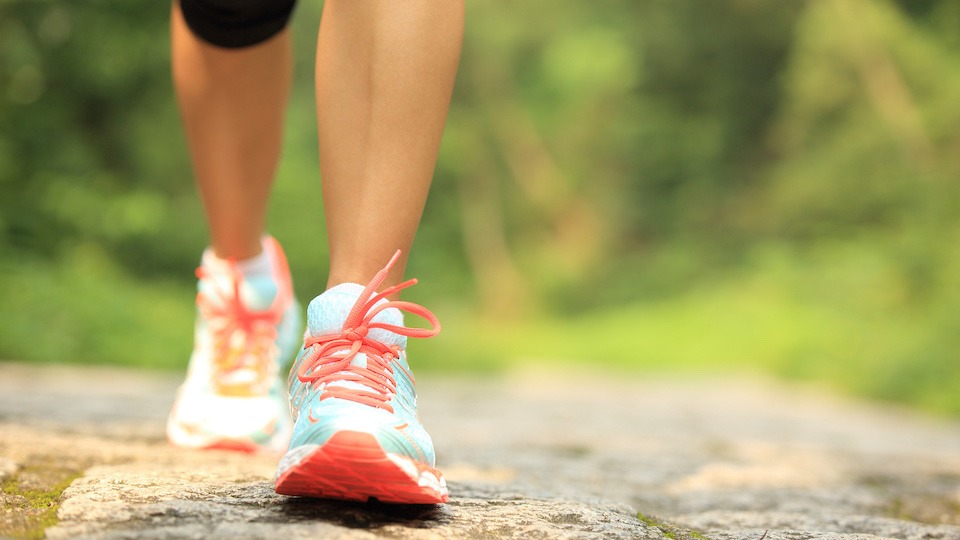It’s unlikely that you think much about how you walk. You just, do it, right? Well, if you’re walking for exercise (and you should be), there is a right way and a wrong way to go about it. Though it seems like a no brainer, walking properly actually takes effort, and a proper stride and equipment can make your daily stroll around the neighborhood even more beneficial.
A mere 30 minutes of walking each day can strengthen your bones, help you lose weight, increase your cardiovascular health, and boost your endurance. You don’t need any special equipment, and you can get started right now at your own pace. But before you do, here are a few common walking mistakes that you can avoid with some simple adjustments.
Wearing the wrong shoe
Shoes are designed for specific purposes. Those high heels can be worn for a night on the town (though there’s some evidence that you shouldn’t even wear them for that), while those hiking boots should only be used in the great outdoors. When it comes to the perfect walking shoe, look for something lightweight and breathable with a lightly padded heel for extra impact absorption. A mid-range running shoe is usually a good option.
Taking long strides
Believe it or not, taking a bigger stride isn’t the best way to max out your walking speed and make the most of your exercise. In fact, unnaturally lengthening your stride can lead to pulled hamstrings, shin splints, and, frankly, a very strange-looking gait. Focus instead on increasing the speed of your normal gait and simply moving your legs faster. This will allow you to cover more ground and will help raise your heart rate, giving you that extra cardio bonus.
Leaning forward
Once again, it may take some battling against your natural instinct to overcome this bad walking habit. If you’ve started trying to focus on speed, you may be tempted to lean forward into your movement and hunch your shoulders. Not only will this lead to muscle tension in your neck, but it will hamper your ability to walk faster.
Improper arm motions
It is a mistake to think that walking is all about your lower body. In reality, your arms have a lot to do with walking and can either help you speed up or slow you down depending on what you do with them. Bend your arms and let them swing (in a controlled motion) in time with your stride. This will keep your arms from swelling and also work to engage another part of your body in the exercise.
Looking down
What’s so interesting about the pavement? Unless you are walking somewhere truly boring, the scenery around you is most likely way better than your feet and the unchanging terrain. This posture hampers your breathing and strains your back and neck. Stand tall and keep your gaze fixed on the horizon.
Walking too slowly
When you aim to walk as exercise, you are going to want to pick up the pace past a leisurely stroll. This is a gentle, low impact exercise that anyone can do, but it is important to push yourself and challenge your own fitness level. You should be slightly out of breath and notice your heart rate picking up a little. If you don’t, try upping your speed or duration.
Following the same route
Walking is a wonderful way to get out of your home or office and experience exciting sights and sounds around you. Even if you live in the heart of the city, you can still find fun places to walk. Change up your route every few days and explore new paths and trails. This will not only help keep you interested in walking but will also allow you to find local areas you wouldn’t otherwise visit.
Walking on a treadmill
There’s nothing inherently bad about walking on a treadmill, and if your only other option is not walking at all, then it is a great thing to do. However, one of the primary benefits of walking is that it allows you to spend time outdoors. It gives you a burst of fresh oxygen, vitamin D, and can put you in a great frame of mind. Walking on a treadmill just isn’t the same as taking your exercise into nature. Even if that nature is just your local park, any kind of green space is incredibly healthy.
Do you know of any other common walking mistakes? Let us know in the comments below!
-The UpWellness Team









